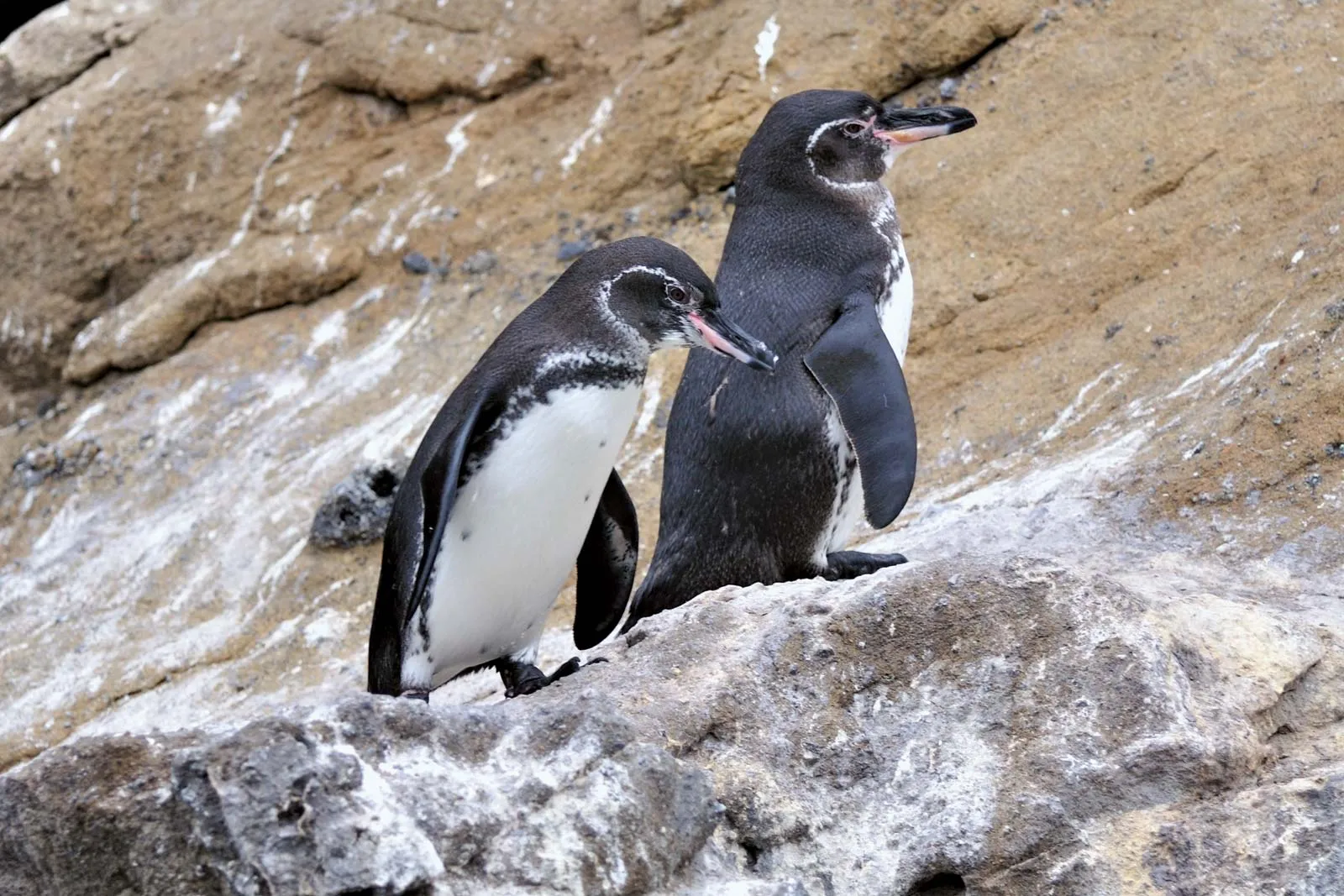
The Galapagos Islands are known for their incredible biodiversity and unique wildlife, and one of the most fascinating inhabitants of this archipelago is the Galapagos penguin. Despite being one of the rarest penguin species in the world, the Galapagos penguin has captured the hearts of many with its charm and adaptability. In this article, we will delve into 14 fascinating facts about the Galapagos penguin, shedding light on their physical characteristics, behavior, habitat, and conservation status. From their ability to withstand warm temperatures to their playful nature, these charismatic creatures continue to captivate researchers and visitors alike. So, without further ado, let’s dive into the amazing world of the Galapagos penguin and uncover the secrets of this remarkable avian species.
Key Takeaways:
- Galapagos Penguins are the only penguin species living in the Northern Hemisphere, and they’ve adapted to the warm climate with unique behaviors and physical features. They’re like the cool kids of the penguin world!
- Conservation efforts are in place to protect the Galapagos Penguins from threats like climate change and El Niño. It’s like having a superhero team to keep these special penguins safe and sound!
Galapagos Penguins are the only penguin species found in the Northern Hemisphere.
The Galapagos Penguin is unique because it is the only species of penguin that lives north of the equator. This makes them incredibly special and quite a fascinating sight to behold!
They are the smallest species of penguins.
Galapagos Penguins are the smallest species of penguin, measuring between 19 and 21 inches in height. Despite their small size, they are excellent swimmers and divers.
Galapagos Penguins have a unique adaptation to the warm climate.
Unlike other penguins that inhabit cold regions, Galapagos Penguins have adapted to the warm climate of the Galapagos Islands. They have developed a series of behavioral and physical adaptations to cope with the heat, such as panting and resting in the shade to cool down.
They have distinctive black and white markings.
Galapagos Penguins have a unique and eye-catching appearance with their black back and white front. This coloration helps them to blend in with the surrounding ocean waves and makes it easier for them to catch prey and avoid predators.
Their diet mainly consists of fish and krill.
Galapagos Penguins primarily feed on small fish such as anchovies and sardines, as well as krill. They are skilled hunters and can dive up to 100 feet underwater to catch their prey.
They are monogamous and form long-term bonds.
Galapagos Penguins are known to be monogamous, meaning they form long-lasting pair bonds. They typically mate for life and share the responsibility of raising their offspring.
They nest in rocky crevices and caves.
Galapagos Penguins create their nests in rocky crevices and caves found along the coastline of the Galapagos Islands. These secret nesting spots provide them with protection from predators and the harsh elements.
Galapagos Penguins are excellent swimmers.
Galapagos Penguins are agile swimmers and can reach speeds of up to 20 miles per hour in the water. Their streamlined bodies and strong flippers enable them to navigate through the ocean with ease.
They are endemic to the Galapagos Islands.
Galapagos Penguins are found exclusively in the Galapagos Islands, which are located off the coast of Ecuador in South America. They are considered an endemic species, meaning they are native and exclusive to a particular geographic location.
They have a unique breeding pattern.
Unlike most penguin species, Galapagos Penguins have a non-seasonal breeding pattern. They can breed at any time of the year, depending on the availability of food.
Climate change and El Niño pose a threat to their population.
The warming of the ocean due to climate change and the occurrence of El Niño events have a significant impact on the population of Galapagos Penguins. Changes in their food availability and nesting sites make it more challenging for them to survive and reproduce.
They communicate through various vocalizations.
Galapagos Penguins have a range of vocalizations to communicate with each other, including honks, brays, and trumpeting sounds. These vocalizations are essential for pair bonding, defending territories, and identifying each other.
Galapagos Penguins can live up to 15-20 years.
On average, Galapagos Penguins have a lifespan of around 15-20 years. However, some individuals have been known to live longer in the wild.
Conservation efforts are being made to protect their population.
Due to their vulnerable status, conservation organizations and the Ecuadorian government have implemented various measures to protect the Galapagos Penguin population. These include the creation of marine protected areas and monitoring programs to ensure their survival for future generations.
Conclusion
In conclusion, Galapagos penguins are fascinating creatures that have captured the hearts of many. They are unique in their ability to adapt to the harsh conditions of their environment and have established themselves as an iconic species in the Galapagos Islands. From their small size and distinctive markings to their highly efficient hunting techniques and playful demeanor, there is so much to learn and appreciate about these incredible birds. The conservation efforts focusing on protecting their habitat and population are crucial to ensure the long-term survival of this remarkable species. Exploring and understanding the diverse wildlife of the Galapagos Islands, including the Galapagos penguins, is not only a thrilling experience but also an opportunity to appreciate the wonders of the natural world.
FAQs
1. How many species of penguins are found in the Galapagos Islands?
Only one species of penguin is found in the Galapagos Islands, which is the Galapagos penguin (Spheniscus mendiculus).
2. What is the average size of a Galapagos penguin?
Galapagos penguins are one of the smallest penguin species, with an average height of about 19 inches (49 centimeters) and weighing around 5.5 pounds (2.5 kilograms).
3. How do Galapagos penguins survive in the hot climate of the islands?
Galapagos penguins have adapted to the warm climate by living in the cool waters surrounding the islands and seeking shade during the hottest parts of the day. They also have specialized feathers that help regulate their body temperature.
4. What do Galapagos penguins eat?
Galapagos penguins mainly feed on small fish, such as anchovies and sardines. They are also known to consume crustaceans and cephalopods.
5. Are Galapagos penguins endangered?
Yes, Galapagos penguins are considered an endangered species. Their population has been greatly affected by the effects of climate change, disruptions in their food chain, and introduced predators.
6. Can visitors encounter Galapagos penguins during their visit to the islands?
Yes, visitors to the Galapagos Islands often have opportunities to observe Galapagos penguins up close during snorkeling, diving, or wildlife-watching excursions. However, it is important to maintain a respectful distance to preserve their natural behavior and habitat.
7. How long do Galapagos penguins live?
On average, Galapagos penguins live for about 15-20 years in the wild. However, some individuals have been known to live for over 30 years.
Galapagos penguins, fascinating creatures, have adapted to their unique environment. Their story is just one example of the incredible diversity found in the Galapagos Islands. Many endangered species around the world face similar challenges, including threats from climate change. Exploring these topics further can deepen our understanding of the natural world and the importance of conservation efforts.
Was this page helpful?
Our commitment to delivering trustworthy and engaging content is at the heart of what we do. Each fact on our site is contributed by real users like you, bringing a wealth of diverse insights and information. To ensure the highest standards of accuracy and reliability, our dedicated editors meticulously review each submission. This process guarantees that the facts we share are not only fascinating but also credible. Trust in our commitment to quality and authenticity as you explore and learn with us.


